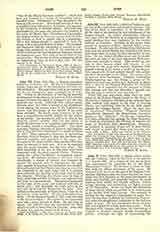

John IV, POPE (640-642), a native of Dalmatia, and the son of the scholasticus (advocate) Venantius. The date of his birth is uncertain; d. October 12, 642. At the time of his election he was archdeacon of the Roman Church. As John’s consecration followed very soon after his election, it is supposed that the papal elections were now confirmed by the exarchs resident at Ravenna. Troubles in his native land, caused by invasions of Slays, directed John’s attention there. To alleviate the distress of the inhabitants, John sent the abbot Martin into Dalmatia and Istria with large sums of money for the redemption of captives. As the ruined churches could not be rebuilt, the relics of some of the more important Dalmatian saints were brought to Rome. John erected an oratory in their honor which still stands. It was adorned by the pope with mosaics depicting John himself holding in his hands a model of his oratory. John apparently did not content himself with palliating the evils wrought by the Slays. He endeavored to convert these barbarians. Emperor Constantine Porphyrogenitus says that Porga, a prince of the Croats who had been invited into Dalmatia by Heraclius I, sent to an Emperor Heraclius for Christian teachers. It is supposed that the emperor to whom this message was sent was Heraclius I himself, and that the pope to whom he sent was John IV.
While still only pope-elect, John, with the other rulers of the Roman Church, wrote to the clergy of the North of Ireland to tell them of the mistakes they were making with regard to the time of keeping Easter, and exhorting them to be on their guard against the Pelagian heresy. About the same time he condemned Monothelism. Emperor Heraclius immediately disowned the Monothelite document known as the “Ecthesis”. To his son, Constantine III, John addressed his apology for Pope Honorius, in which he deprecated the attempt to connect the name of Honorius with Monothelism. Honorius, he declared, in speaking of one will in Jesus Christ, only meant to assert that there were not two contray wills in Him. John was buried in St. Peter’s.
HORACE K. MANN

